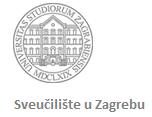Naziv kolegija: Uvod u lingvistički studij engleskog jezika EN1L01
Nositelj kolegija: dr. sc. Mateusz Milan Stanojević, izv.prof.
Nastavnik: dr.sc. Marina Grubišić, doc.
ECTS-bodovi: 6 bodova
Jezik: engleski
Semestar: I. (zimski)
Status: obvezatni
Oblik nastave: 4 sata predavanja
Uvjeti: —
| Tjedan | Tema | Bilješke |
| 1 | Introduction | Orientation, syllabus |
| Introduction | Scientific study of language. Levels of linguistic study. | |
| 2 | Articulatory phonetics | The sounds of English in comparison with the sounds of Croatian – a review of familiar notions. Articulatory description of sounds. Notation of sounds – transcription. The vocal tract and the ways of making sounds.(Ch. 4. in Yule (2006) |
| The sounds of English | Using the vocal tract to produce the sounds of English. Articulatory description of consonants, vowels and diphthongs. Some basic contrasts with Croatian. (Ch. 4 in Yule (2006)) | |
| 3 | Suprasegmentals. Acoustic and auditory phonetics. | Suprasegmentals: stress, tone, intonation and their importance in meaning. Basic contrasts with Croatian. Measurement of sound waves and sound perception: examples of studies, their results and their significance. |
| The sound pattern of a language. | Phonology: the organization of sounds. Basic terms: phonemes, allophones, minimal pairs, phonotactics. Phonological alternations in English (and some basic contrasts with Croatian). (Ch 5 in Yule (2006); Ch. 1 in Fasold & Connor Linton (2006)). Additional reading: chapter 3 from Josipović (1999). | |
| 4 | Constructing words in a language | Examples of the way words are constructed in English. Basic contrasts with Croatian. Phonotactic, semantic and functional limitations to making new words vs. acceptable innovations. How words become conventionalized. Why words – psychological reality vs. definitional problems. Morphemes. |
| Morphological operations. Derivation and inflection | Morphemes, types of morphemes. Allomorphs. Ch. 7 in Yule (2006). Basic morphological operations: affixation, reduplication, ablaut and suppletion. Definitions of derivation and inflection. Examples. Ch. 3. in Fasold & Connor Linton (2006)). | |
| 5 | Derivation and inflection | Types of derivation. Types of inflection. The significance of inflection and derivation in English and Croatian. Examples and exercises. |
| Combining units: phrases and sentences | The basis of word combinations: meaning and grammar. Word classes and their characteristics. Problems with defining word classes. Larger units: phrases clauses, sentences. Head and dependents. Syntax: definition. Morphology and syntax: grammar. Ch. 8 in Yule (2006). | |
| 6 | Syntax | The basis of word combinations – an overview of verbal and nominal grammatical categories. English vs. Croatian verbal categories: tense, aspect, mood, voice. (Selected terms from a glossary of linguistic terms). |
| Syntax | English vs. Croatian nominal categories: case, number, gender. Paradigmatic and syntagmatic relations in syntax. Syntactic functions vs. word classes. Exercises. Revision. Basics of generative grammar. Ch. 9 in Yule (2006). | |
| 7 | Continuous assessment 1 | |
| Continuous assessment 1 | Review. | |
| 8 | Semantics | The centrality of meaning in linguistic analysis. The study of meaning on all linguistic levels: phonology (contrastive; suprasegmentals & intonation) morphology (definitional), syntax (the meaning of word combinations, phrases and sentences). Two levels of meaning: individual units (lexical meaning) & their combinations (phrases, sentences). Conceptual and associative meaning. Lexical relations (synonymy, antonymy, homonymy (homophony), polysemy). |
| Semantics (cont.) | Lexical relations (hyponymy, prototypes; metonymy). Semantics of word combinations: simple addition or emergent meaning? Collocations, idioms. Semantic features, feature analysis, its problems. Semantic roles. Ch 10 in Yule (2006). Semantic studies – key interests. | |
| 9 | Pragmatics | Meaning in context: pragmatics. Various examples of contextual meaning differences: knowledge of the world and culture, inference. Deixis: person, time, space; what English and Croatian code. Speech acts (introduction, examples). |
| Pragmatics. Discourse analysis. | Speech acts (classification, felicity conditions). Pragmatic principles: cooperation, politeness. Interpreting discourse: cohesion & coherence, speech events, turn-taking, hedges, schemas and scripts. Chapters 11 & 12 in Yule (2006). | |
| 10 | Continuous assessment 2 | |
| Continuous assessment 2 | Review | |
| 11 | Language history and language variation: diachronic linguistics. | Synchrony vs. diachrony (revision). Family trees, family relationships, comparative reconstruction. Examples. |
| Language history and language variation (cont.) | Old English, Middle English, Modern English. The process of change, sound changes, syntactic changes, lexical changes. Ch. 17 in Yule (2006).Language variation: sociolinguisticsLectal varieties: geographical, social, educational distribution. Language continuum. Examples of varieties of English around the world. Examples of sociolinguistic research: methods, participants and results. Sociolinguistic interview. Ch. 18 & 19 in Yule (2006). | |
| Language and mind; language and culture. | Revision of material. Examples of exam questions. Exercises. Discussion of study questions. What is different in language structure (a review of examples). What is common to all languages: typology and universals. Beyond linguistic structure: the body and culture as a source of similarities / differences. Examples (the significance of body parts in various languages). Universality / relativity: the Sapir-Whorf hypothesis. Some more examples (colors, kinship terms). | |
| 13 | Continuous assessment 3 | |
| Continuous assessment 3 | Review |
Literatura:
Obavezna literatura:
– Yule, George (2006). The Study of Language. 3rd ed. Cambridge University Press
Dodatna literatura:
– Fasold, Ralph W., and Connor-Linton, Jeff (eds.) (2006). An Introduction to Language and Linguistics. Cambridge University Press
– Josipović, Višnja (1999). Phonetics and Phonology for Students of English. Zagreb: Targa, str. 25-31
– Lyons, John (1981). Language and Linguistics. An Introduction. Cambridge University Press, str. 34-65; 100-135



